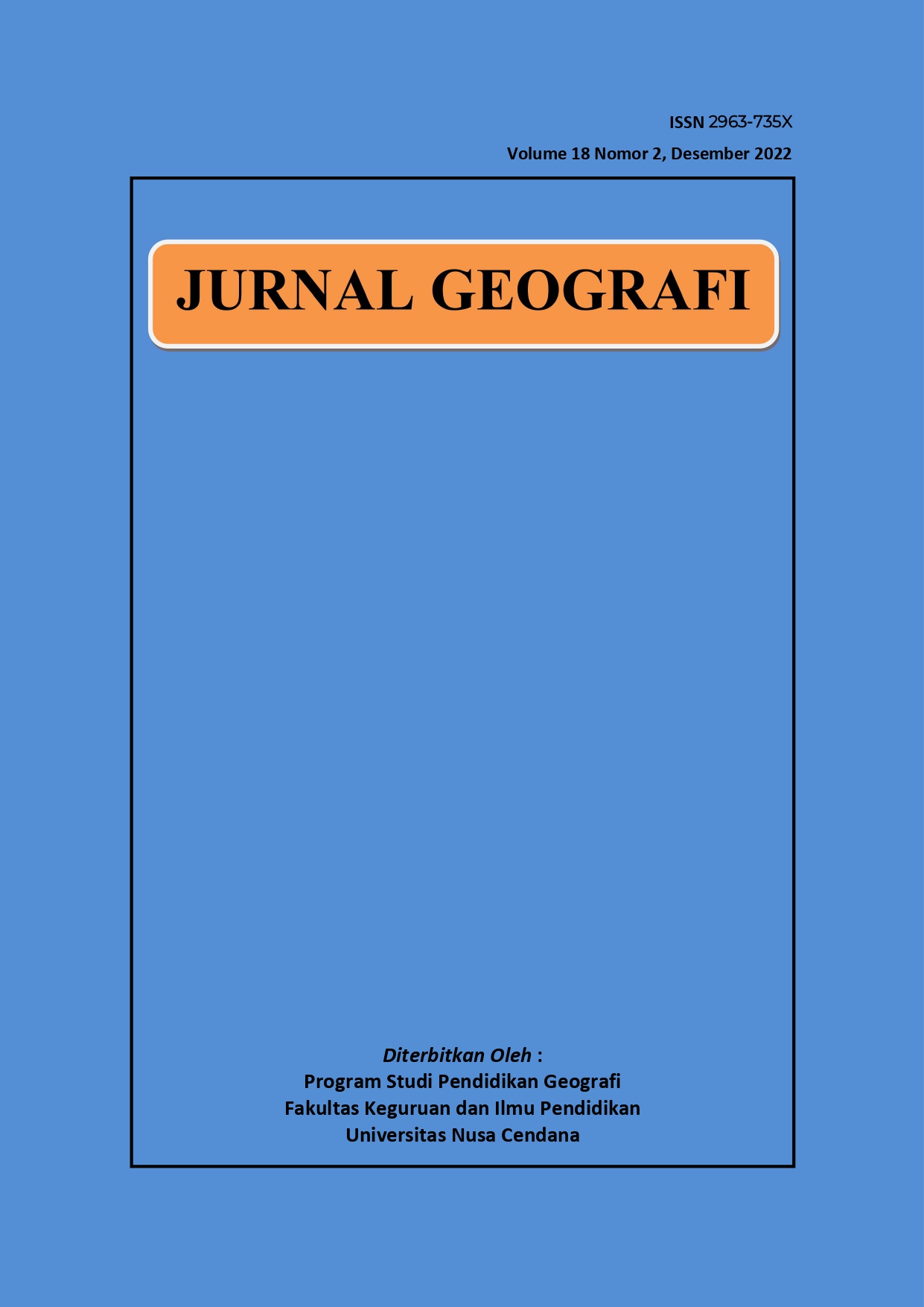IDENTIFIKASI DAN ANALISIS KEARIFAN LOKAL PERBURUAN SATWA LIAR (PARAWITU) DI DESA PAPE KECAMATAN BAJAWA KABUPATEN NGADA
Abstract
The aims of this study to (1) Identify Local Wisdom In Hunting Wild Animals In Pape Village, Bajawa Sub-District, Ngada District; (2) Identify The Use Of Local Wisdom In Hunting Wild Animals In Pape Village, Bajawa District, Ngada Regency; (3) Analyze The Spatial Distribution Of Wildlife Hunting Activities In Pape Vilage,Bajawa District, Ngada Regency. The method used in this research is a qualitative research method. Sources of data used secondary data and primary data. Data collection techniques, namely observations, interviews, observations and documentation studies. The data analysis technique used qualitative analysis through the data processing stage, and conclusions. The results are as follows: (1) the main motivation for hunting activities was to fulfill traditional needs and rituals. Hunting activities are only permitted for local people. The main game animals are wild boar, deer. The local wisdom of hunting for the local people of Pape Village is the prohibition of killing animals in the forest without a clear purpose, the selection of game animals and the use of nature for hunting, the inheritance of hunting skills is passed on to the next generation orally and directly. (2) The customs of the Pape people in hunting pigs and deer are carried out for generations, namely, this hunting carried out without destroying the forest ecosystem and the Pape people still preserve other animals. In nurturing and maintaining local wisdom, hunting continues to this day to show the existence and use of wild animals as the fulfillment of protein needs, traditional rituals, decorations, and for food ingredients.(3) Wild animals spread patterns in an ecological community. Wild board and deer are suspected to have a non-random distribution pattern, because these. Two wild animals are wild animals that are selective in choosing habitats.

 Maria H. Ono Liu(1*)
Maria H. Ono Liu(1*)




